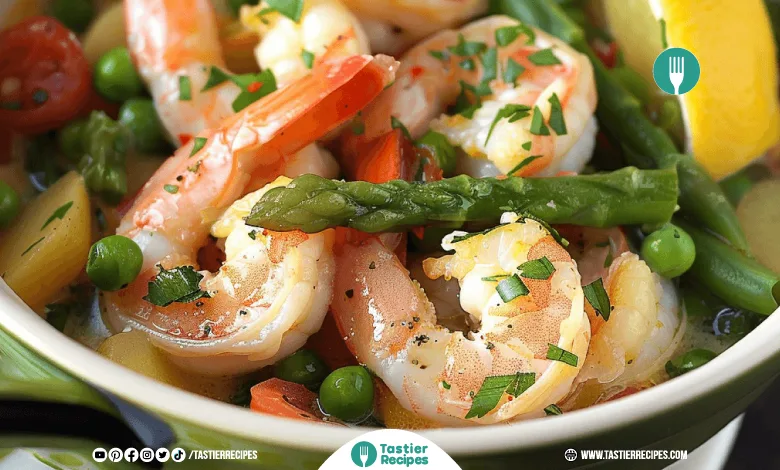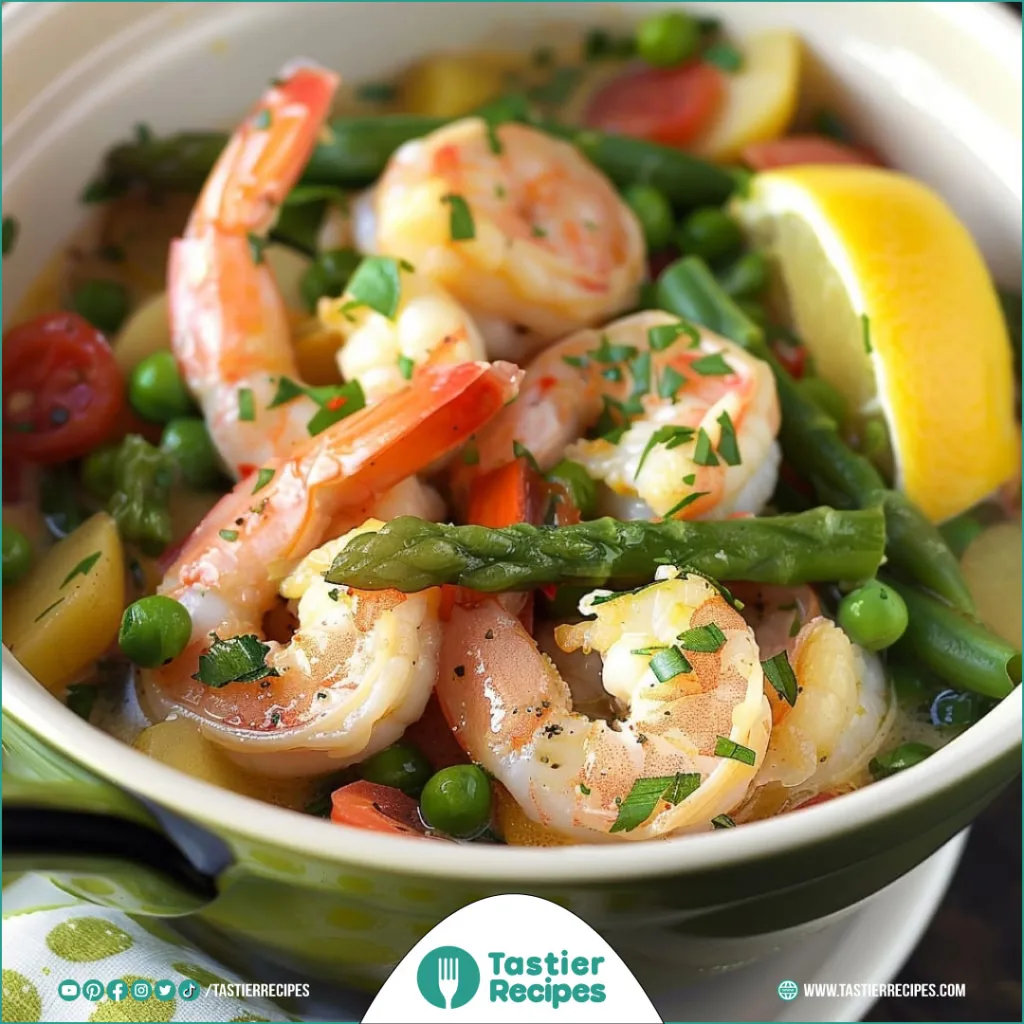Delicious Slow Cooker Shrimp Scampi with Vegetables

ADVERTISEMENT
Shrimp scampi is a beloved classic, celebrated for its simplicity and vibrant flavors. Traditionally, it involves sautéing shrimp in a garlic butter sauce, often served over pasta. However, with a slow cooker, you can transform this classic dish into a convenient, hands-off meal that retains all the delightful flavors of the original. The Slow Cooker Shrimp Scampi with Spring Vegetables is a perfect example of this culinary innovation. This dish combines succulent shrimp with fresh spring vegetables, all enveloped in a rich, garlicky sauce. It’s perfect for busy weeknights or entertaining guests without spending all day in the kitchen.
Ingredients

The Shrimp Scampi:
- 750 grams (approximately) peeled and deveined shrimp (1.5 pounds converts to 681 grams, but 750 is a rounder number for measurements)
- 1/4 cup unsalted butter, melted
- 1/4 cup olive oil
- 6 cloves garlic, minced
- 1/2 cup chicken broth
- 1/2 cup dry white wine
- Zest and juice of 1 lemon
- 1 teaspoon red pepper flakes (optional)
- Salt and pepper to taste
- 1/4 cup fresh parsley, chopped
- Slow Cooker Comfort: Easy Hobo Casserole for Busy Weeknights
For the Spring Vegetables:
- 1 cup 2-inch asparagus spears (trimmed)
- 1 cup cherry tomatoes, halved
- 1 cup sugar snap peas, trimmed
- 1/2 cup carrots, thinly sliced
- 1/2 cup bell peppers, sliced
For Serving:
- Cooked pasta or rice (optional)
- Freshly grated Parmesan cheese (optional)
- Lemon wedges
Instructions
Prepare the Slow Cooker
Layer the Vegetables:
- Start by layering the spring vegetables at the bottom of the slow cooker. Begin with the carrots and bell peppers, which take longer to cook, followed by the asparagus, sugar snap peas, and cherry tomatoes. This helps everything cook evenly and keeps the tender veggies from getting mushy.
Combine the Sauce Ingredients:
- In a medium bowl, combine the melted butter, olive oil, minced garlic, chicken broth, white wine, lemon zest, and lemon juice. Whisk until well blended. For a bit of heat, add the red pepper flakes. Season with salt and pepper to taste.
Add the Shrimp:
- Place the peeled and deveined shrimp on top of the vegetables in the slow cooker. Spoon the sauce over the shrimp and vegetables, making sure they’re all coated.
Slow Cook the Scampi:
- Cover the slow cooker and cook on low for 2-3 hours or on high for 1-2 hours. The shrimp should be opaque and cooked through, and the vegetables should be tender but not mushy.
Finish the Dish
Add Fresh Herbs:
- Once the shrimp and vegetables are cooked, stir in the chopped fresh parsley. This adds a burst of color and fresh flavor to the dish.
Adjust Seasoning:
- Taste and adjust the seasoning with additional salt, pepper, or lemon juice if needed. The sauce should be flavorful and slightly tangy.
Serve
Plate the Dish:
- Serve the Slow Cooker Shrimp Scampi with Spring Vegetables over cooked pasta or rice for a more substantial meal. The cooked pasta or rice will absorb the flavorful sauce, resulting in a burst of taste with every mouthful.
Garnish:
- Sprinkle with freshly grated Parmesan cheese and additional chopped parsley if desired. For a touch of brightness, serve with lemon wedges on the side.
Conclusion
The Slow Cooker Shrimp Scampi with Spring Vegetables showcases how traditional recipes can be adapted for modern convenience without sacrificing flavor. This dish celebrates fresh, vibrant ingredients, brought together in a rich, garlicky sauce that highlights the natural sweetness of shrimp and the crispness of spring vegetables. The slow cooker method allows for a hands-off approach, making it ideal for busy days when you still want to enjoy a homemade, gourmet meal. Each bite offers a delightful mix of textures and flavors, from tender shrimp to crunchy vegetables and zesty lemon sauce. This recipe is sure to become a household favorite, perfect for any occasion. Enjoy the ease and deliciousness of this Slow Cooker Shrimp Scampi with Spring Vegetables, and savor the taste of spring in every spoonful.
ADVERTISEMENT